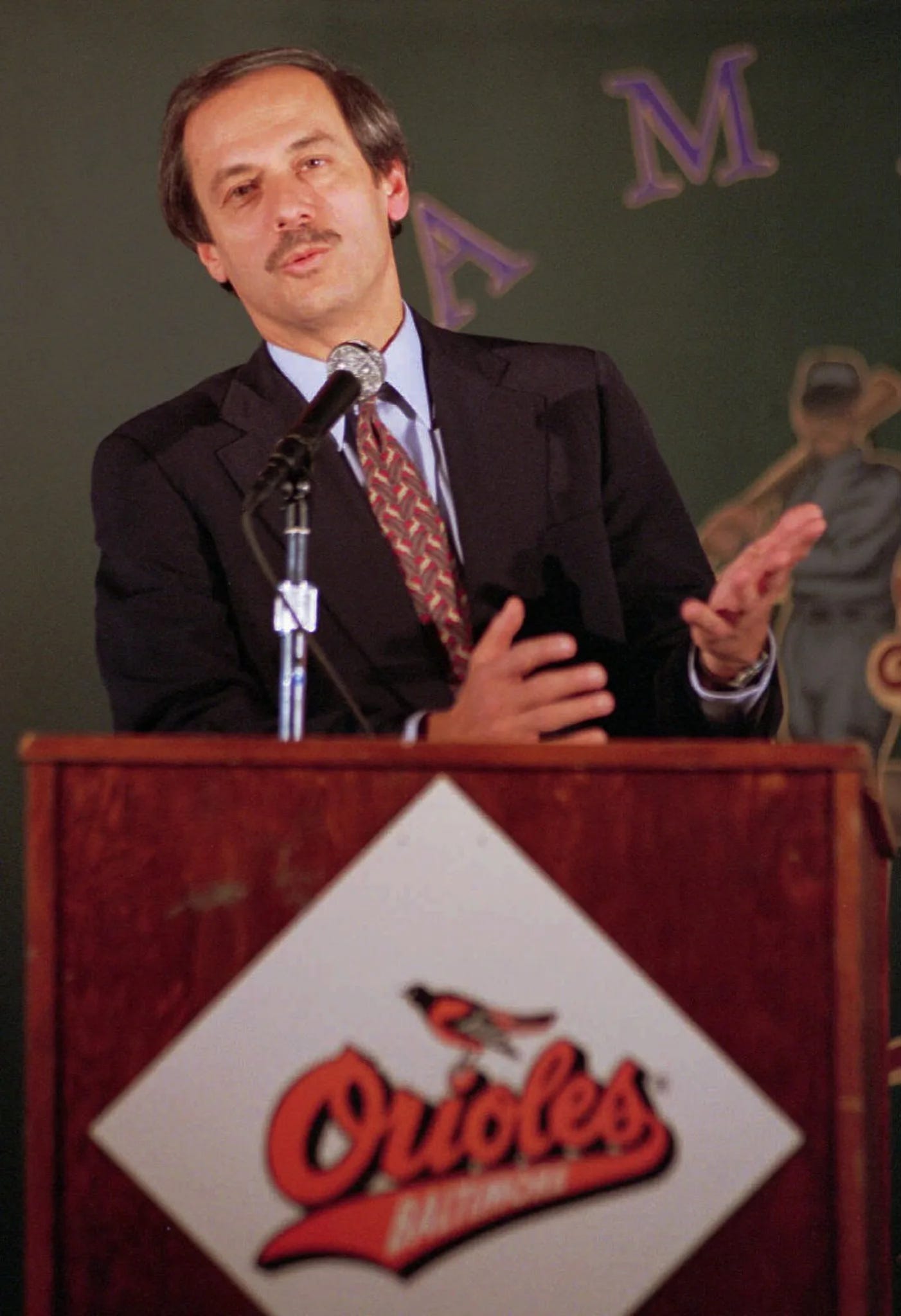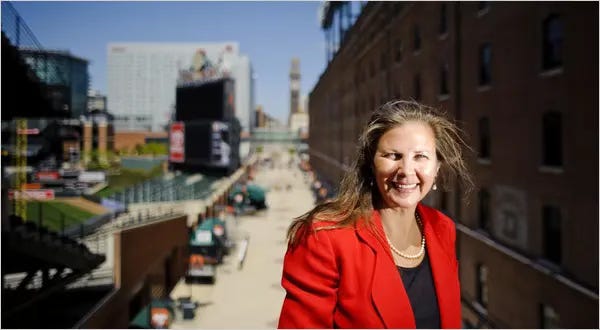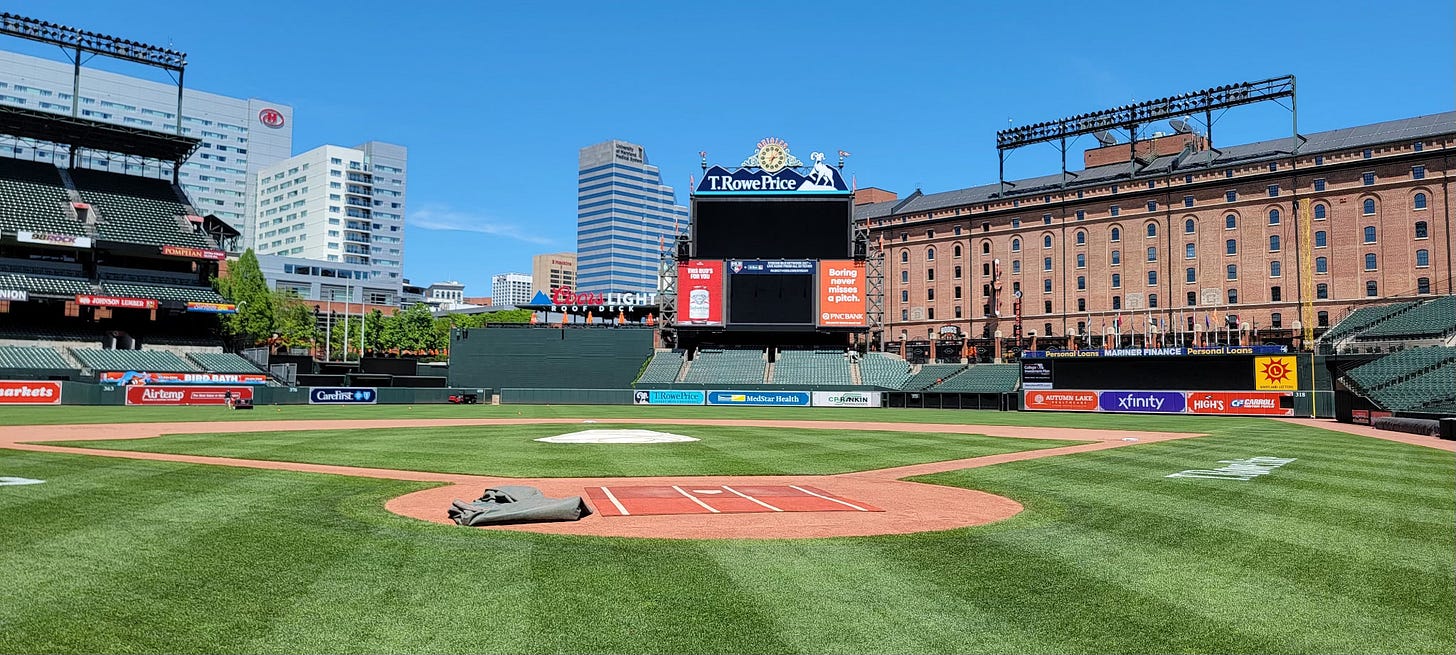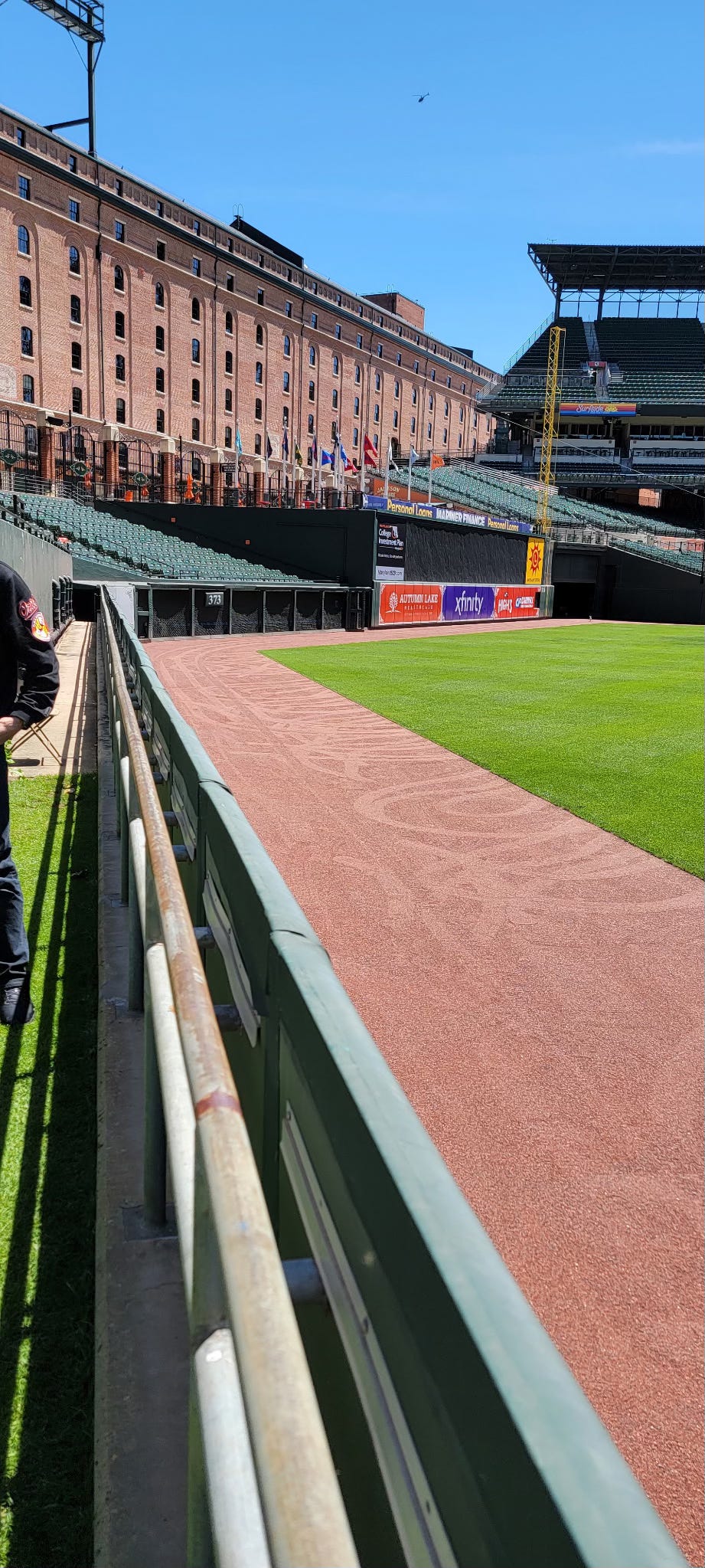When Oriole Park at Camden Yards opened in 1992 in downtown Baltimore, it was so immediately recognized as unique and groundbreaking that entire books were written about who deserved the credit.
A small army of architects and other creatives did, Janet Marie Smith included.
But more than three decades later, Smith wants it known that one person alone birthed the fundamental concept that has made the ballpark so enduringly revered — Larry Lucchino, the Orioles’ president in the ‘80s and early ‘90s.
“It was Larry’s idea to do an old-fashioned ballpark with modern amenities,” Smith told me near the end of our recent conversation about her pioneering role in the construction of the ballpark that, indeed, changed baseball stadia forever.
Other parties involved in the design and construction of Camden Yards included the Maryland Stadium Authority, which oversaw the project; HOK, the architectural firm; another architectural firm, RTKL, which had a role in early planning; and even Eli Jacobs, the Orioles’ owner at the time, who had some thoughts about what a new park for his team should look like. Frank Robinson, the club’s manager at the time, was a “secret weapon,” Smith said.
But among all those parties, Smith told me, it surely was Lucchino who had the original, grand vision to give fans the newest of the new in a setting that echoed the past.
Smith was tasked with turning Lucchino’s vision into reality.
In our interview, a truly historical accounting available to paid Bird Tapes subscribers with this post, Smith walked me through two amazing journeys — a) how she became involved in the first place, and b) how she and the others produced such a spectacular setting for baseball.
She was working as an architect in Los Angeles in the late ‘80s when she heard about a new ballpark being planned in Baltimore — first heard about it in, of all places, the seats at Memorial Stadium, where the Orioles spent their first 37 years. It turned out the Orioles were hiring a point person to be involved in the design and construction. Smith applied. Received a rejection letter. (I told you the journey was amazing.) Eventually, she got the job.
A whole host of important decisions lay ahead. It wasn’t always certain that the B&O warehouse would survive, or that Eutaw Street would run right through the ballpark, or that the scale would be smaller than what was deemed normal at the time, or that underpinnings of steel, not concrete, would dominate. Each of those decisions was critical to producing such a satisfying result, and Smith was at the table for all of it.
But her greatest contribution was determining how to forge a “modern throwback environment,” which sounds like a contradiction until you see it.
To help Smith chart a path forward, she went backward and studied the iconic parks of the early twentieth century, seeking to understand what made them so lasting, how they fit into the neighborhoods around them, etc. It wasn't easy in the years before the internet, which put such research just a few mouse clicks away. Smith resorted to studying old postcards and a few books.
In the end, she made countless important decisions, one of which was hiring a graphic designer to ensure that small touches such as the old-school lettering in the seating bowl were appealingly executed.
There were almost no women in baseball at the time, and the prevailing industry attitude about them was, in a word, demeaning. Lucchino famously took a wrong step during their initial interview, asking Smithif she knew which league had the designated hitter. A serious fan, she laughed and said she was insulted. Lucchino was appalled in hindsight about what her’d done, and the Orioles eventually gave her a major title — Vice President of Planning and Development — to make sure she was respected. She worked for the team from 1988 through 1994.
The resounding success of Camden Yards changed the course of Smith’s career. She became a leading authority on “retro” ballparks and worked on the redesigns of Fenway Park, Dodger Stadium and others. The Orioles re-hired her to oversee the redesign of Ed Smith Stadium in Sarasota, Florida — another resounding success.
It all sprang from her role in making Camden Yards a triumph on a scale none of the creatives ever envisioned. George Will later wrote that the three most important events in baseball since the end of World War II were Jackie Robinson taking the field in 1947, the players gained free agency in 1975 and the opening of Camden Yards in 1992.
“It’s humbling,” Smith said of the awe the stadium has generated for decades. “Perhaps it was successful because we aspired to do the best for Baltimore baseball. The national impact was a surprise.”
(Note from John Eisenberg: Published here as a podcast, my interview with Smith can be downloaded to your preferred device and/or consumed on apps such as Apple Podcasts or Spotify. Click on the “subscribe now” button to upgrade from free to paid and gain access to my entire archive of interviews with former Oriole players, front office executives, scouts, managers, broadcasters and beat writers.)
Listen to this episode with a 7-day free trial
Subscribe to The Bird Tapes to listen to this post and get 7 days of free access to the full post archives.

















